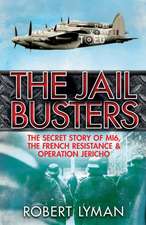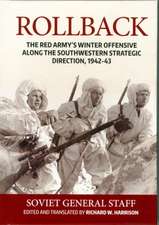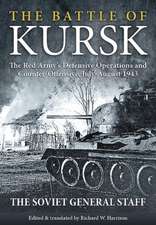The History of the British Army Film & Photographic Unit in the Second World War: Helion Studies in Military History, cartea 05
Autor Fred McGladeen Limba Engleză Paperback – 14 sep 2010
Din seria Helion Studies in Military History
-
 Preț: 269.14 lei
Preț: 269.14 lei -
 Preț: 166.40 lei
Preț: 166.40 lei -
 Preț: 243.66 lei
Preț: 243.66 lei -
 Preț: 200.39 lei
Preț: 200.39 lei -
 Preț: 125.88 lei
Preț: 125.88 lei -
 Preț: 169.13 lei
Preț: 169.13 lei - 8%
 Preț: 369.27 lei
Preț: 369.27 lei -
 Preț: 243.33 lei
Preț: 243.33 lei -
 Preț: 123.88 lei
Preț: 123.88 lei -
 Preț: 166.40 lei
Preț: 166.40 lei -
 Preț: 166.61 lei
Preț: 166.61 lei -
 Preț: 198.21 lei
Preț: 198.21 lei -
 Preț: 198.92 lei
Preț: 198.92 lei -
 Preț: 242.19 lei
Preț: 242.19 lei -
 Preț: 105.67 lei
Preț: 105.67 lei -
 Preț: 137.11 lei
Preț: 137.11 lei -
 Preț: 166.67 lei
Preț: 166.67 lei - 8%
 Preț: 368.36 lei
Preț: 368.36 lei -
 Preț: 335.97 lei
Preț: 335.97 lei -
 Preț: 226.56 lei
Preț: 226.56 lei
Preț: 199.19 lei
Nou
Puncte Express: 299
Preț estimativ în valută:
38.11€ • 39.72$ • 31.56£
38.11€ • 39.72$ • 31.56£
Carte disponibilă
Livrare economică 13-27 martie
Livrare express 27 februarie-05 martie pentru 24.93 lei
Preluare comenzi: 021 569.72.76
Specificații
ISBN-13: 9781906033941
ISBN-10: 1906033943
Pagini: 212
Ilustrații: 29 b/w photos
Dimensiuni: 155 x 231 x 20 mm
Greutate: 0.34 kg
Editura: HELION & COMPANY
Seria Helion Studies in Military History
ISBN-10: 1906033943
Pagini: 212
Ilustrații: 29 b/w photos
Dimensiuni: 155 x 231 x 20 mm
Greutate: 0.34 kg
Editura: HELION & COMPANY
Seria Helion Studies in Military History






